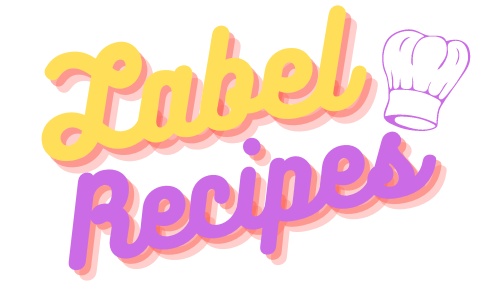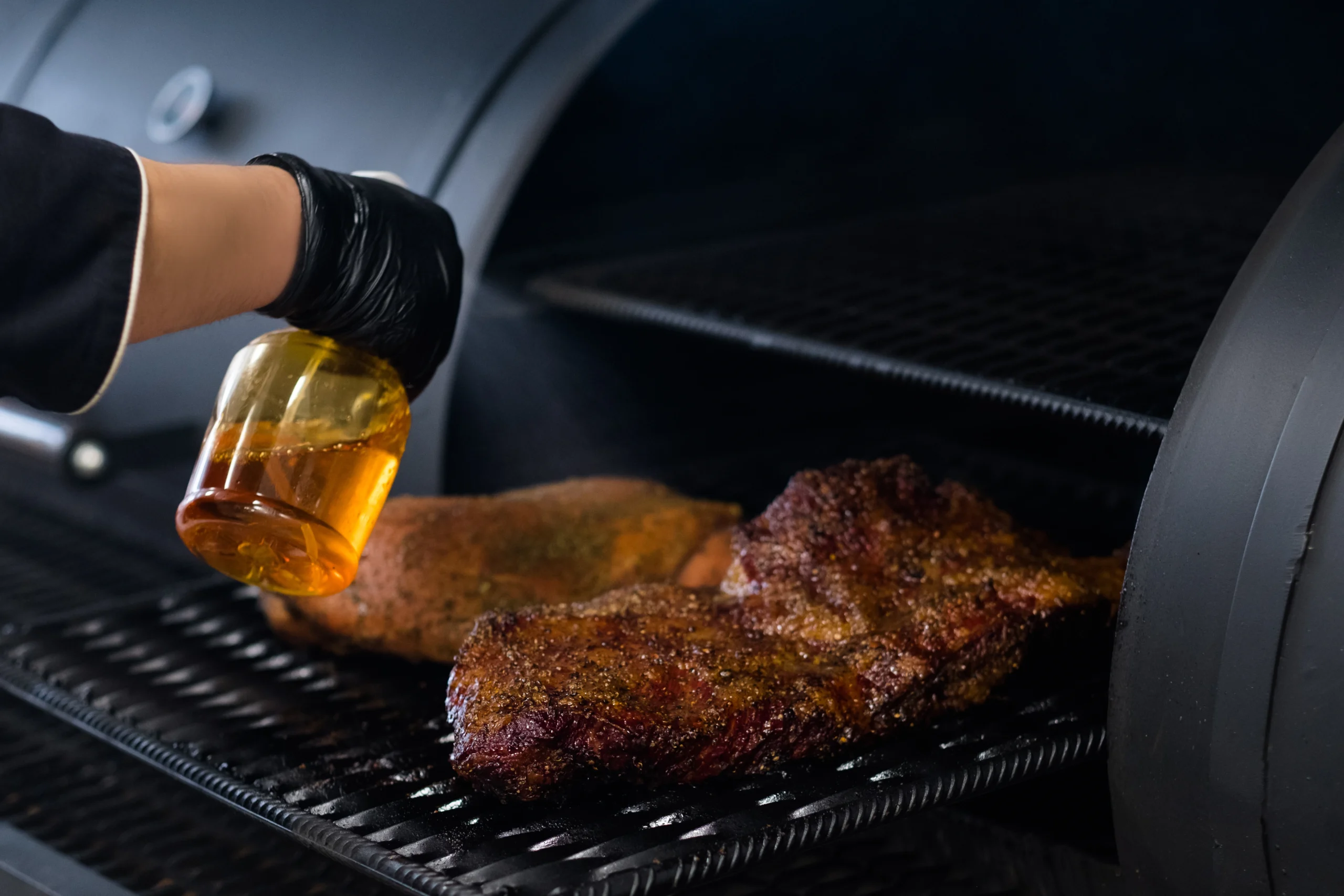If you’re new to smoking meat, using a pellet smoker is one of the easiest and most flavorful ways to get started. Known for its convenience and ability to produce a perfect, consistent smoke, a pellet smoker takes the guesswork out of cooking. In this guide, we’ll share easy pellet smoker recipes for beginners that will help you master the art of smoking. Whether you’re looking to smoke a tender brisket or juicy chicken, these recipes will ensure you achieve that perfect, mouthwatering smoke flavor every time. Ready to fire up your pellet smoker? Let’s dive in!
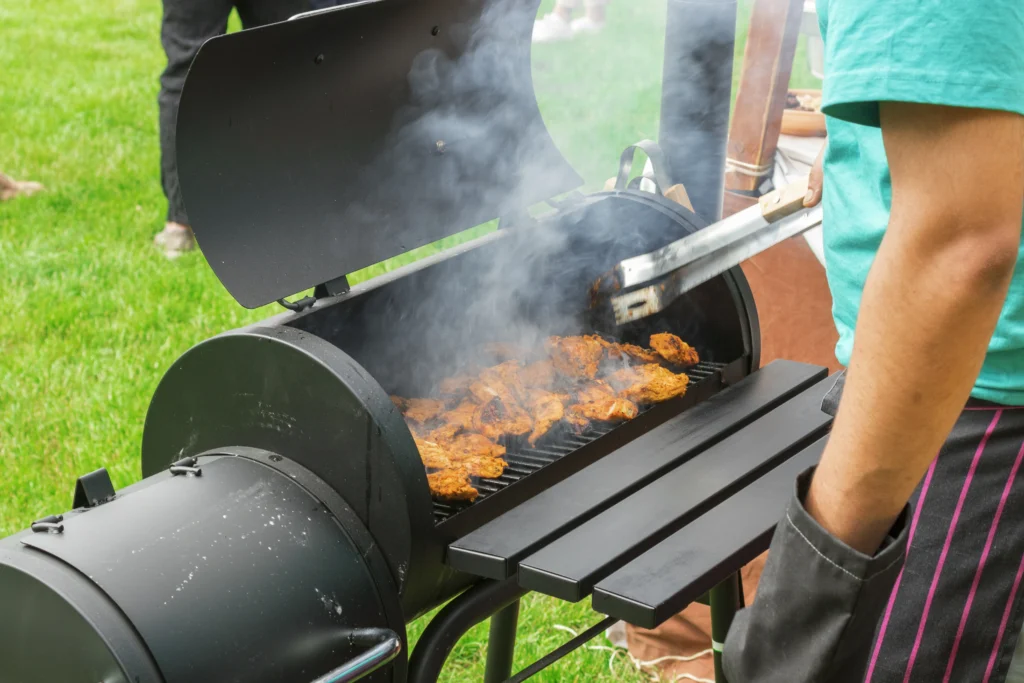
Why Pellet Smokers Are Perfect for Beginners
Pellet smokers have gained immense popularity among BBQ enthusiasts, and for good reason—they offer a perfect balance of convenience, consistency, and flavor. If you’re new to smoking meats, a pellet smoker is an excellent choice for several reasons:
1. Ease of Use with Set-and-Forget Functionality
Unlike traditional charcoal or offset smokers that require constant attention, pellet smokers operate more like an outdoor oven. Simply load the hopper with wood pellets, set your desired temperature, and let the smoker do the rest. The automated feeding system ensures a steady burn, eliminating the need to frequently check and adjust the heat.
2. Precise Temperature Control
Pellet smokers are equipped with digital temperature controls that regulate heat with remarkable precision. Most models allow you to adjust the temperature in increments as small as 5°F, ensuring that your meat cooks evenly and doesn’t over-smoke or dry out. This level of control is ideal for beginners who may not yet be comfortable managing temperature fluctuations manually.
3. Minimal Learning Curve
Traditional smokers can take a while to master, requiring an understanding of airflow, fuel management, and smoke levels. Pellet smokers, on the other hand, remove much of the guesswork, making them an excellent starting point for those who are new to smoking. Many models even come with built-in meat probes and WiFi connectivity, allowing you to monitor your cook from your phone.
4. Consistent and Reliable Results
One of the biggest challenges in smoking meat is maintaining consistent heat and smoke. Pellet smokers excel in this area, using advanced technology to automatically adjust pellet feeding and airflow. This means you’ll get perfectly smoked meats every time, without the frustration of unpredictable temperature swings.
5. Wide Range of Wood Pellet Flavors
Beginners will love experimenting with different wood pellet flavors, such as hickory, applewood, mesquite, and cherry. Unlike traditional smokers where managing wood chunks and chips can be tricky, pellet smokers allow you to easily swap pellet types for different flavor profiles, adding depth and richness to your BBQ.
6. Versatility Beyond Smoking
Pellet smokers are not just for smoking; they can grill, roast, bake, and even braise. Whether you want to smoke a brisket low and slow, sear a steak at high heat, or bake a homemade pizza, a pellet smoker offers multiple cooking methods in one device—making it a fantastic all-in-one outdoor cooker for beginners.
7. Less Mess and Hassle-Free Cleanup
Traditional smokers often produce large amounts of ash and require intensive cleaning. Pellet smokers generate minimal ash, and many models feature easy-to-clean grease management systems. This means less time spent scrubbing and more time enjoying your perfectly smoked meal.
Final Thoughts
If you’re a beginner looking to dive into the world of smoked meats without the steep learning curve, a pellet smoker is the perfect solution. It simplifies the smoking process while still delivering mouthwatering, authentic BBQ flavors. With its ease of use, consistency, and versatility, a pellet smoker will have you cooking like a pro in no time!
Essential Tools & Ingredients for Pellet Smoker Success
To achieve the best results with your pellet smoker, having the right tools and ingredients is just as important as the smoker itself. Whether you’re a beginner or an experienced BBQ enthusiast, these essentials will help you maximize flavor, maintain consistency, and simplify the smoking process.
Must-Have Tools for Pellet Smoking
1. High-Quality Wood Pellets
Pellet smokers rely on compressed wood pellets for fuel, so choosing high-quality pellets is crucial. Look for 100% natural hardwood pellets with no fillers or additives to ensure a clean burn and rich, smoky flavor. Some popular wood flavors include:
- Hickory – Strong, smoky, and slightly sweet; great for pork, beef, and ribs.
- Applewood – Mild and fruity; perfect for poultry and pork.
- Mesquite – Bold and earthy; ideal for beef and game meats.
- Cherry – Sweet and mild; excellent for poultry and pork.
- Oak – Versatile and well-balanced; works with almost any meat.
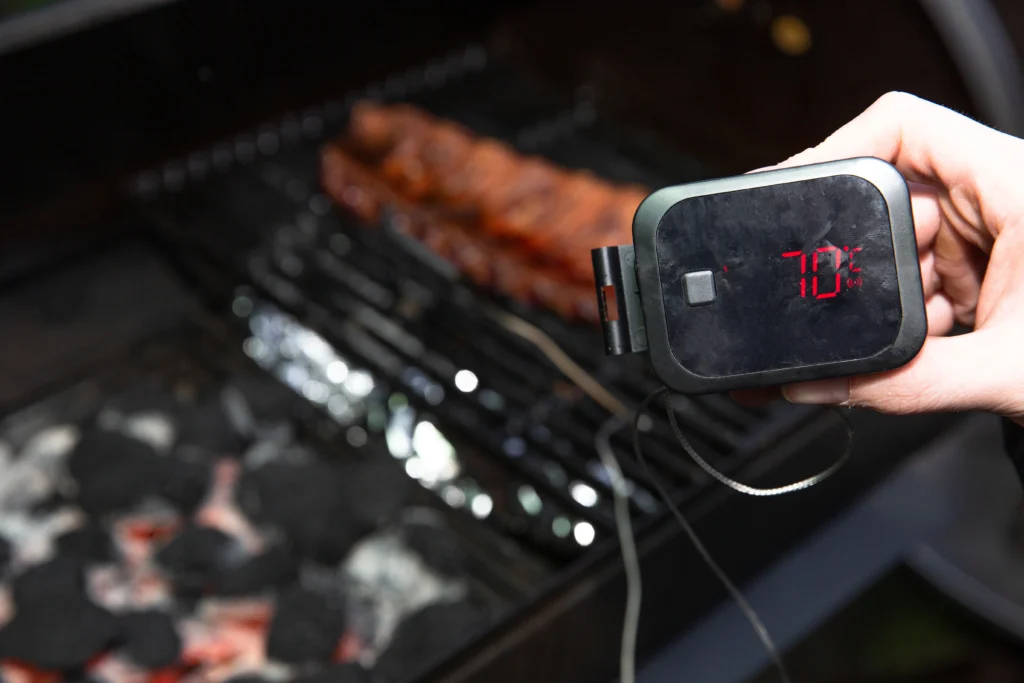
2. Meat Thermometer (Preferably Wireless)
A reliable digital meat thermometer ensures that your food reaches the perfect internal temperature without overcooking or drying out. Wireless thermometers, like the ThermoPro or MEATER, allow you to monitor temperatures remotely so you don’t have to keep opening the smoker lid.
3. Pellet Storage Container
Wood pellets absorb moisture quickly, which can affect their burn quality and performance. Using an airtight storage container keeps your pellets dry and prevents them from becoming damp, leading to more efficient and consistent cooking.
4. Grill Cover
A durable, weather-resistant cover protects your pellet smoker from rain, snow, and UV exposure, extending its lifespan and maintaining optimal performance.
5. Heat-Resistant BBQ Gloves
Handling hot grates, meat, and accessories can be risky, so invest in a pair of heat-resistant gloves to protect your hands from burns while adjusting racks, wrapping meat, or moving hot food.
6. Grill Brush & Cleaning Tools
Regular cleaning keeps your smoker running efficiently and prevents leftover grease from affecting the flavor of your food. Essential cleaning tools include:
- A sturdy grill brush for removing residue from the grates.
- A vacuum or ash clean-out tool for clearing excess ash from the firepot.
- A grease bucket liner for easy disposal of drippings.
7. Aluminum Foil & Butcher Paper
Wrapping meat is a key technique in smoking to prevent drying out and enhance tenderness. Use:
- Aluminum foil for quickly wrapping ribs, brisket, or poultry.
- Pink butcher paper (preferred for brisket) to allow the meat to breathe while retaining moisture.
8. Spray Bottle or Mop Brush
Keeping meats moist during smoking enhances flavor and texture. A simple spray bottle filled with apple cider vinegar, apple juice, or broth works wonders for spritzing. A mop brush is another great tool for basting meats with sauce or marinade.
9. Smoke Tubes (Optional but Great for Extra Flavor)
Want even more smoky goodness? A smoke tube filled with extra pellets can extend smoke time and add richer flavors, especially when cooking at higher temperatures where smoke production decreases.
Essential Ingredients for Pellet Smoking Success
1. High-Quality Meat & Proteins
The foundation of any great smoked dish is high-quality meat. Some of the best cuts for pellet smoking include:
- Brisket – A BBQ staple that turns incredibly tender when smoked low and slow.
- Pork Shoulder (Pulled Pork) – Absorbs smoke beautifully and stays juicy for hours.
- Baby Back or Spare Ribs – Perfect for layering on smoky, savory, and sweet flavors.
- Chicken (Whole or Wings) – Gains a crispy exterior while staying juicy inside.
- Salmon – Smokes quickly and absorbs flavors well, especially with fruitwood pellets.
2. BBQ Rubs & Seasonings
A great dry rub enhances flavor and helps create a flavorful crust (bark) on the meat. Whether store-bought or homemade, some common seasonings include:
- Salt & Black Pepper – The foundation of any good rub.
- Paprika – Adds a smoky, slightly sweet flavor.
- Garlic Powder & Onion Powder – Enhances depth and savoriness.
- Brown Sugar – Helps with caramelization and sweetness.
- Chili Powder & Cayenne – For a spicy kick.
3. Marinades & Brines
For extra moisture and flavor, marinate meats before smoking or use a saltwater brine (especially for poultry and pork). Popular marinade ingredients include:
- Worcestershire sauce
- Apple cider vinegar
- Soy sauce
- Citrus juices
- Olive oil
4. BBQ Sauce & Finishing Glazes
Whether you like your BBQ sweet, tangy, or spicy, a good finishing sauce brings everything together. Consider these types:
- Kansas City-Style BBQ Sauce – Sweet and thick with molasses and brown sugar.
- Carolina Vinegar Sauce – Tangy and bold, perfect for pulled pork.
- Texas-Style Mop Sauce – Savory and peppery with a thinner consistency.
- Honey or Maple Glaze – Adds a touch of sweetness to smoked chicken or ribs.
5. Wood Chips or Chunks (For Extra Smoke Flavor)
While pellet smokers generate smoke from their pellets, you can enhance the flavor by placing wood chips or chunks directly onto the heat diffuser or inside a smoker box. This is especially useful for meats that require a deeper smoky taste.
Final Thoughts
Having the right tools and ingredients can take your pellet smoking game to the next level. By investing in essential accessories, high-quality pellets, and flavorful seasonings, you’ll be able to create mouthwatering BBQ with ease. Whether you’re a beginner or an experienced smoker, these must-haves will help you get the most out of your pellet smoker, ensuring delicious, smoky perfection every time!
Easy Pellet Smoker Recipes to Try First
If you’re new to pellet smoking, starting with simple, foolproof recipes will help you build confidence while delivering mouthwatering results. The following beginner-friendly recipes are easy to follow, packed with smoky flavor, and require minimal prep. These dishes will allow you to get familiar with your pellet smoker while impressing your family and friends!
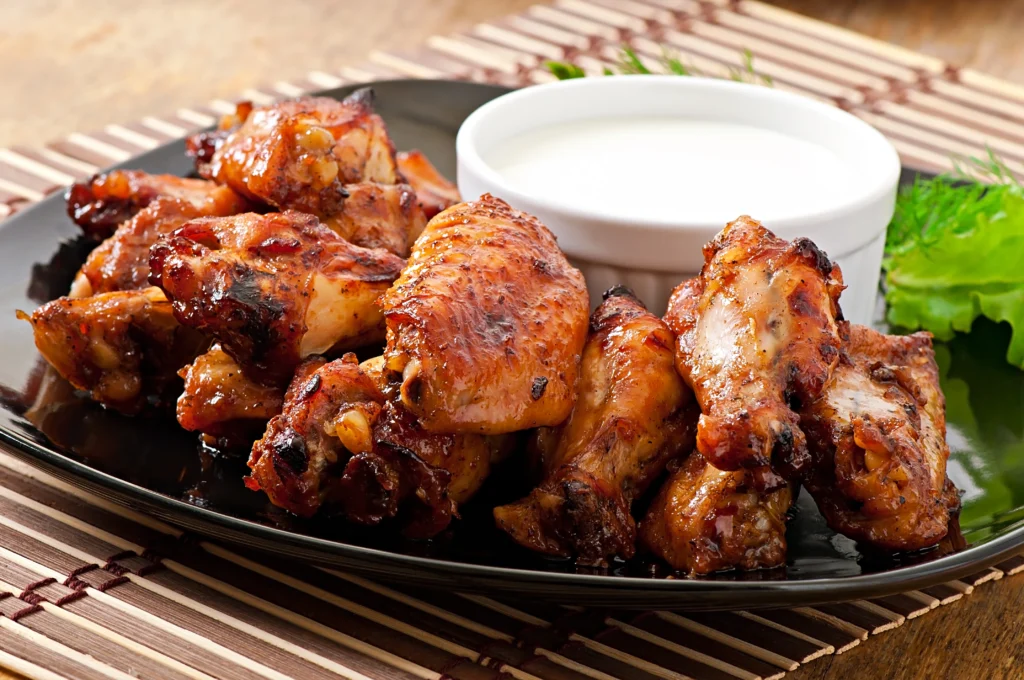
1. Smoked Chicken Wings
Crispy, smoky, and absolutely irresistible, smoked chicken wings are a great way to get started with your pellet smoker. They cook relatively quickly and soak up flavors beautifully.
Ingredients:
- 2 lbs chicken wings
- 2 tbsp olive oil
- 2 tsp salt
- 2 tsp black pepper
- 1 tbsp smoked paprika
- 1 tsp garlic powder
- 1 tsp onion powder
- ½ tsp cayenne pepper (optional, for extra heat)
- Your favorite BBQ or buffalo sauce (optional)
Instructions:
- Preheat the pellet smoker to 225°F. Use hickory, cherry, or applewood pellets for the best flavor.
- In a large bowl, toss the wings with olive oil, then coat evenly with the seasoning mix.
- Arrange the wings on the smoker grates and smoke for 1.5 hours at 225°F.
- Increase the temperature to 375°F and cook for another 20-30 minutes until the skin crisps up and the internal temperature reaches 175°F.
- Toss the wings in BBQ or buffalo sauce if desired, then serve hot!
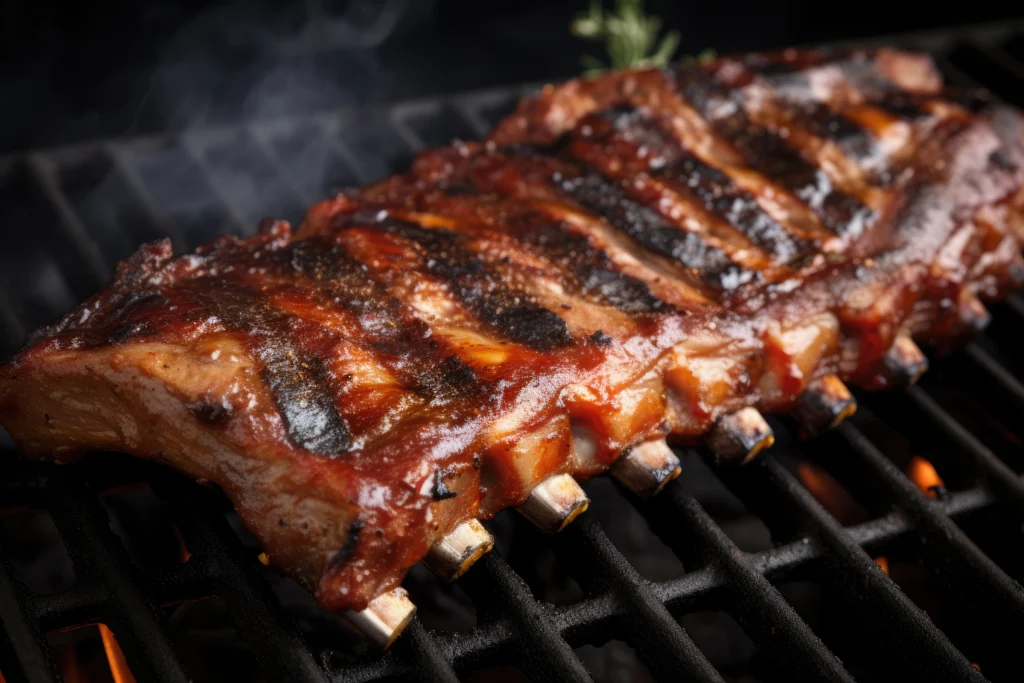
2. Smoked Baby Back Ribs (3-2-1 Method)
This is one of the easiest rib recipes, using the foolproof 3-2-1 smoking technique to create fall-off-the-bone ribs.
Ingredients:
- 1 rack of baby back ribs
- 2 tbsp yellow mustard (as a binder)
- ¼ cup brown sugar
- 2 tbsp paprika
- 1 tbsp salt
- 1 tbsp black pepper
- 1 tsp garlic powder
- 1 tsp onion powder
- ½ tsp cayenne pepper
- ½ cup apple juice (for spritzing)
- ¼ cup honey (for wrapping)
- ½ cup BBQ sauce
Instructions:
- Preheat the smoker to 225°F and use hickory or applewood pellets for great smoke flavor.
- Remove the membrane from the back of the ribs and coat with mustard.
- Mix the brown sugar, paprika, salt, black pepper, garlic powder, onion powder, and cayenne. Rub this all over the ribs.
- Step 1: Smoke (3 hours) – Place ribs on the smoker and smoke uncovered for 3 hours, spritzing with apple juice every hour.
- Step 2: Wrap (2 hours) – Wrap the ribs tightly in foil with a drizzle of honey and more apple juice. Return to the smoker for 2 more hours.
- Step 3: Sauce & Finish (1 hour) – Unwrap the ribs, brush with BBQ sauce, and smoke uncovered for 1 more hour.
- Remove from the smoker, let rest for 10 minutes, then slice and serve.
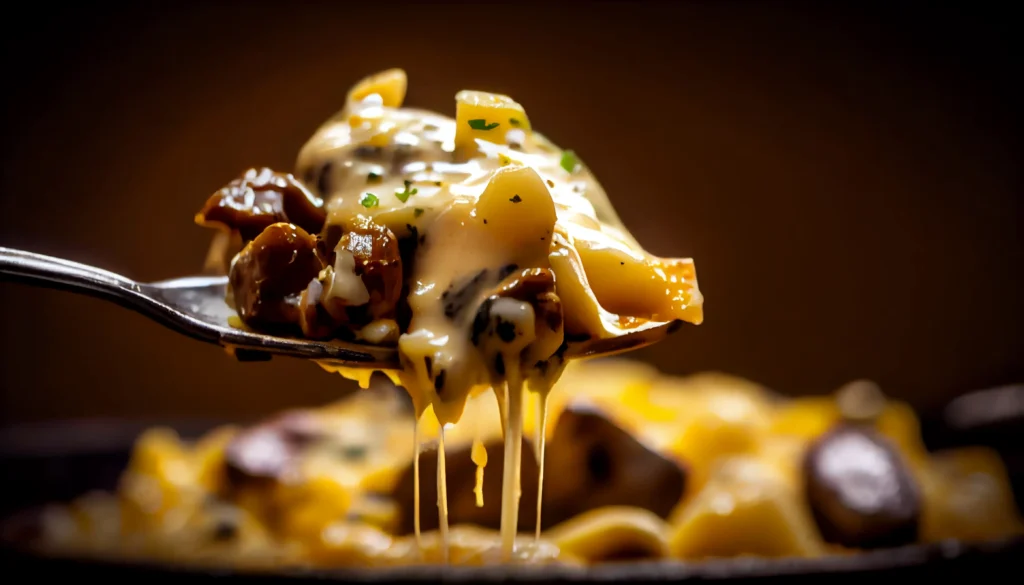
3. Smoked Mac and Cheese
A creamy, cheesy side dish infused with smoky goodness. This one’s a crowd favorite and pairs perfectly with smoked meats.
Ingredients:
- 1 lb elbow macaroni
- 4 tbsp butter
- 4 tbsp flour
- 3 cups whole milk
- 1 cup heavy cream
- 3 cups shredded cheddar cheese
- 1 cup shredded gouda (or smoked gouda)
- 1 tsp salt
- 1 tsp black pepper
- ½ tsp smoked paprika
- 1 cup panko breadcrumbs (optional, for a crispy topping)
Instructions:
- Preheat your smoker to 225°F using hickory or pecan pellets.
- Cook the macaroni according to package instructions, then drain.
- In a large saucepan, melt butter over medium heat, then whisk in the flour. Cook for 1-2 minutes.
- Slowly whisk in the milk and heavy cream, then stir in the salt, pepper, and smoked paprika.
- Add the cheddar and gouda, stirring until melted and smooth.
- Mix the cheese sauce with the cooked macaroni, then pour into a cast-iron skillet or foil pan.
- Sprinkle with panko breadcrumbs if using, then place in the smoker and smoke for 1 hour.
- Remove from the smoker, let rest for a few minutes, then serve warm.
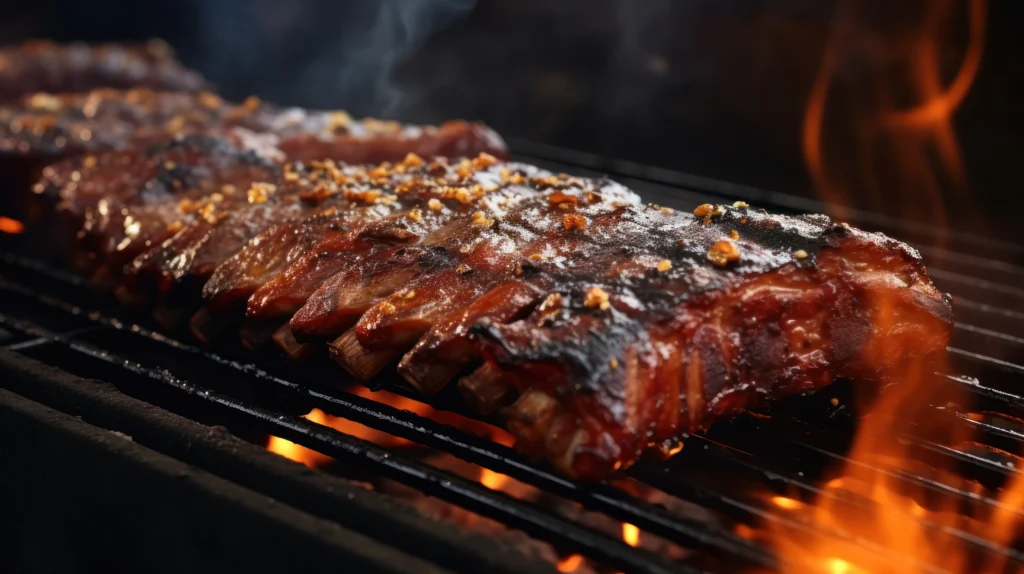
4. Smoked Pulled Pork (Simple & Juicy)
Perfect for sandwiches, tacos, or just eating by the forkful, this pulled pork is melt-in-your-mouth delicious.
Ingredients:
- 1 pork shoulder (5-8 lbs)
- ¼ cup yellow mustard (as a binder)
- ¼ cup brown sugar
- 2 tbsp salt
- 2 tbsp black pepper
- 2 tbsp paprika
- 1 tbsp garlic powder
- 1 tbsp onion powder
- ½ tsp cayenne pepper
- ½ cup apple cider vinegar (for spritzing)
Instructions:
- Preheat your smoker to 225°F with hickory or oak pellets.
- Trim excess fat from the pork shoulder and coat with mustard.
- Mix the brown sugar, salt, black pepper, paprika, garlic powder, onion powder, and cayenne. Rub all over the pork.
- Place the pork on the smoker and smoke for 6-8 hours, spritzing with apple cider vinegar every hour.
- Once the internal temperature reaches 165°F, wrap tightly in foil and continue smoking until it reaches 203°F (about 2-4 more hours).
- Let rest for at least 30 minutes, then shred with forks and serve with your favorite BBQ sauce.
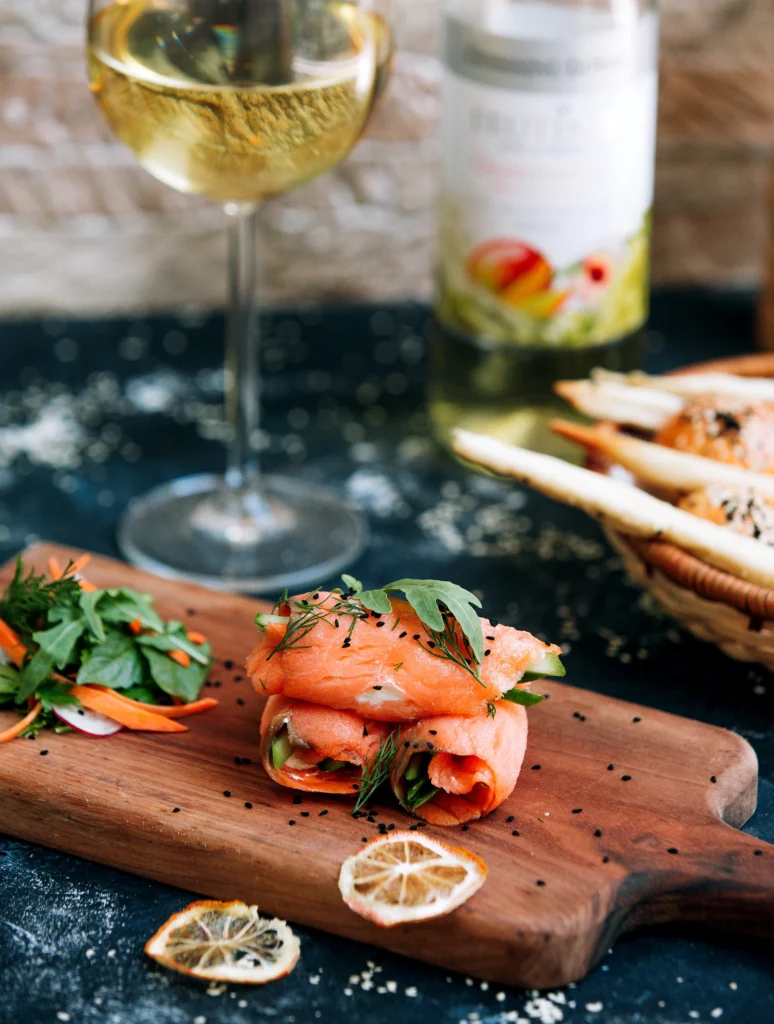
5. Smoked Salmon (Quick & Healthy)
A flavorful, flaky smoked salmon that’s perfect on its own, in salads, or on bagels with cream cheese.
Ingredients:
- 1 large salmon fillet (about 2 lbs)
- 2 tbsp olive oil
- 1 tbsp salt
- 1 tsp black pepper
- 1 tbsp brown sugar
- 1 tsp garlic powder
- 1 tsp smoked paprika
- ½ tsp lemon zest
- Lemon wedges (for serving)
Instructions:
- Preheat your smoker to 225°F with cherry or applewood pellets.
- Brush the salmon fillet with olive oil, then coat with the salt, pepper, brown sugar, garlic powder, smoked paprika, and lemon zest.
- Place the salmon on a wire rack or a cedar plank and smoke for 1.5 to 2 hours, or until the internal temperature reaches 145°F.
- Remove from the smoker, let rest for 5 minutes, then serve with fresh lemon wedges.
Final Thoughts
These easy pellet smoker recipes are perfect for beginners and will help you get comfortable with your smoker while creating delicious, smoky meals. Once you master these, you can start experimenting with more advanced techniques, like reverse-searing steaks or smoking brisket overnight.
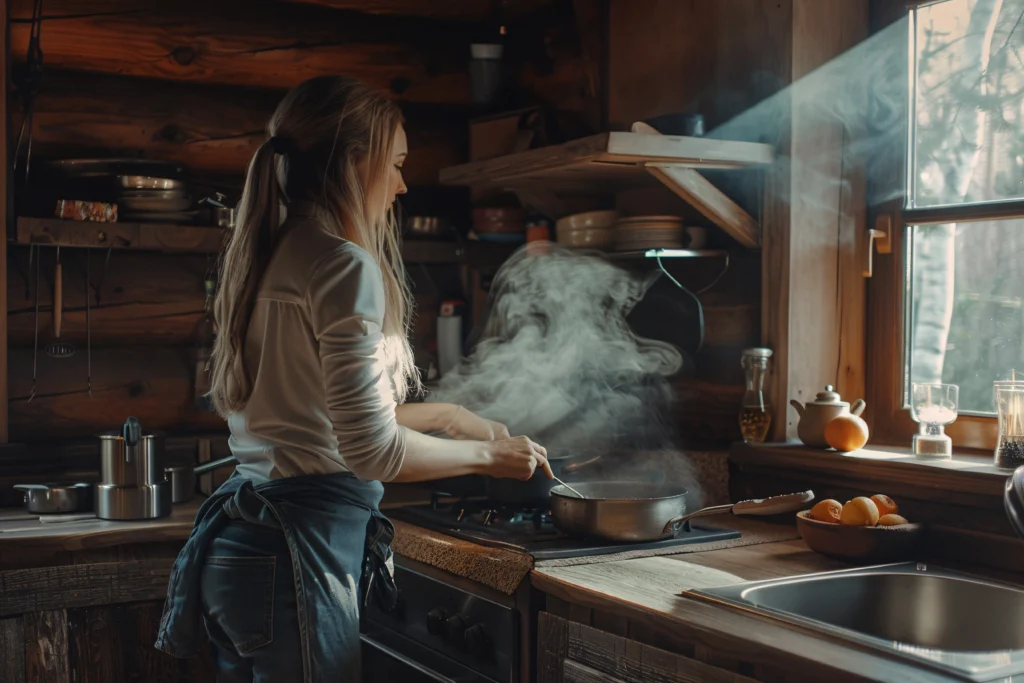
Tips for Getting the Perfect Smoke Flavor
Achieving the perfect smoke flavor in your pellet smoker takes more than just adding wood pellets and letting the smoker do its job. Understanding how smoke interacts with food, temperature control, and proper seasoning techniques will help you create mouthwatering, smoky dishes every time. Here are the key tips to help you master the art of smoke flavor.
1. Choose the Right Wood Pellets for the Best Flavor
The type of wood pellets you use greatly impacts the flavor of your smoked food. Different woods impart different flavors, so choosing the right one for your dish is essential:
- Mild & Sweet Woods (Best for Poultry, Pork, and Fish)
- Apple
- Cherry
- Maple
- Pecan
- Medium Smoke Flavor (Versatile, Great for Almost Anything)
- Oak
- Alder
- Peach
- Strong & Bold Woods (Ideal for Beef, Ribs, and Game Meats)
- Hickory
- Mesquite
💡 Pro Tip: You can mix different wood pellets to create unique flavor profiles. For example, combining apple and hickory gives a balance of sweet and bold smoky flavors.
2. Control Your Smoke Levels (Thin Blue Smoke is Key!)
Not all smoke is created equal! You want thin, blue smoke, which provides a clean and pleasant smoky flavor. Avoid thick white or gray smoke, as it can make food taste bitter.
✅ Thin Blue Smoke = Perfect Flavor
❌ Thick White Smoke = Harsh, Bitter Taste
To achieve thin blue smoke:
- Avoid overloading pellets in the hopper to prevent inefficient burning.
- Use high-quality, dry pellets with no fillers or moisture.
- Ensure proper airflow in your smoker to keep the smoke circulating.
- Preheat your smoker properly to burn off excess residue before cooking.
3. Smoke at Low Temperatures for Maximum Flavor Absorption
Food absorbs smoke best when cooked at lower temperatures. Here’s a general guide to smoking temperatures for optimal flavor:
- 225°F – 250°F – Best for meats like brisket, ribs, and pulled pork.
- 180°F – 200°F – Ideal for fish, cheese, and nuts to enhance smokiness without overcooking.
- 300°F and above – Less smoke penetration but helps crisp up skin on poultry.
💡 Pro Tip: If you want an extra smoky flavor, keep the temperature lower at the start of the cook (around 180°F-200°F) for the first hour before increasing it to your target cooking temp.
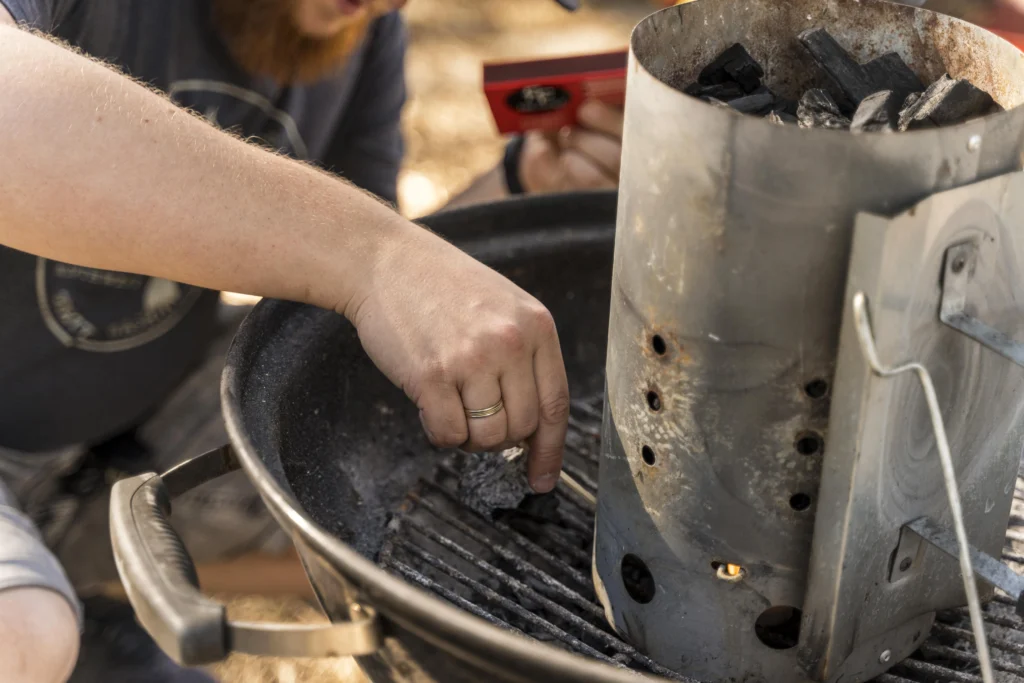
4. Use a Water Pan to Maintain Moisture & Enhance Smoke Adhesion
Moisture helps smoke stick to the surface of your food, leading to better flavor. A water pan placed in the smoker can:
- Prevent meats from drying out.
- Help regulate and stabilize smoker temperature.
- Improve smoke absorption for a deeper flavor.
You can use plain water or experiment by adding:
- Apple cider vinegar (for tangy, sweet notes)
- Beer (for a malty depth)
- Herbs & spices (to subtly enhance aroma)
5. Don’t Overdo the Smoke – Less is More!
A common mistake is thinking that more smoke means better flavor. Too much smoke, especially at high concentrations, can lead to an overpowering, bitter taste.
- Light smoke over a longer period is better than heavy smoke in a short time.
- Wrapping meat in butcher paper or foil can help reduce excessive smoke absorption during long cooks.
6. Let Your Meat Rest for a Stronger Smoke Profile
Resting your smoked meat after cooking allows flavors to settle and intensify. This step is crucial for cuts like brisket, ribs, and pork shoulder.
- Wrap meat in foil or butcher paper and let it rest in a cooler or warm oven for 30 minutes to an hour.
- The carryover heat helps distribute juices and enhances the smoky aroma.
7. Experiment with Smoke Tubes for Extra Flavor
If you want an even stronger smoke profile, consider using a smoke tube. These metal tubes hold extra wood pellets and provide additional smoke without increasing heat.
Best used when:
- Cooking at higher temperatures (300°F or above), where pellet smokers naturally produce less smoke.
- Smoking cheese, nuts, or fish for a cold smoke effect.
8. Keep Your Smoker Clean to Avoid Off-Flavors
A dirty smoker can create rancid smoke that ruins your food’s taste. Regular maintenance ensures you get pure, flavorful smoke every time.
Cleaning tips:
- Vacuum out ash and pellet dust after every few cooks.
- Clean the grease tray and grates to avoid buildup that can cause bad smoke.
- Check the firepot and auger system for pellet clogs.
💡 Pro Tip: Run your smoker at high heat (400°F+) for 10-15 minutes after a cook to burn off any leftover residue.
9. Adjust Smoke Levels Based on Meat Type
Some meats absorb smoke more readily than others. Adjust your smoking strategy based on what you’re cooking:
- Poultry & Fish: Lighter smoke works best (fruitwoods like apple or cherry).
- Pork & Ribs: Medium smoke works well (hickory or oak).
- Beef & Brisket: Can handle heavy smoke (mesquite or hickory).
10. Try Reverse Searing for the Best Flavor & Texture
Reverse searing is a technique where you smoke your meat low and slow first, then finish it with a high-heat sear. This method works wonders for steaks, tri-tip, and pork chops.
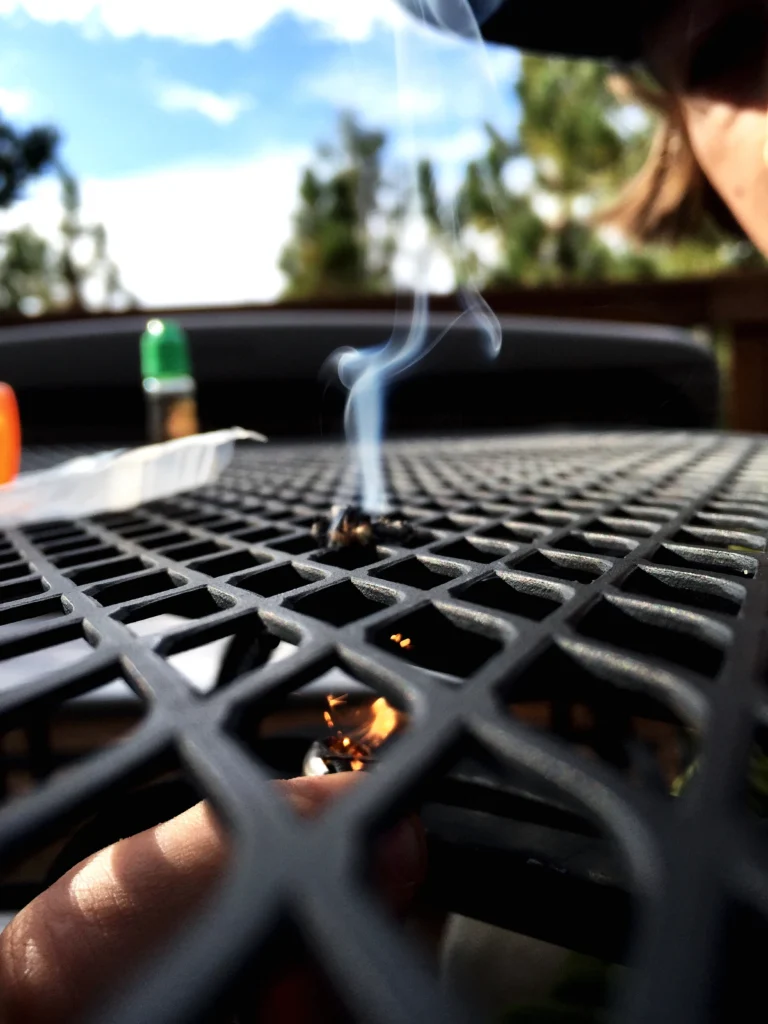
How to Reverse Sear on a Pellet Smoker:
- Smoke meat at 225°F until it reaches 10-15°F below the desired doneness temp (for example, 115°F for medium-rare steak).
- Remove from the smoker and let it rest while increasing the heat to 450-500°F.
- Sear the meat for 1-2 minutes per side to create a crispy, flavorful crust.
- Let it rest for 5 minutes before slicing.
Final Thoughts
Mastering smoke flavor takes practice, but by following these tips, you’ll consistently create delicious, smoky dishes with your pellet smoker. Whether you’re smoking ribs, brisket, or even mac and cheese, balancing smoke intensity, wood selection, and proper techniques will elevate your BBQ game.
Common Pellet Smoker Mistakes to Avoid
While pellet smokers are known for their ease of use, there are still a few pitfalls that can lead to disappointing results. By avoiding these common mistakes, you’ll be well on your way to creating perfectly smoked meats and dishes every time. Here’s what to watch out for:
1. Using Low-Quality Pellets
One of the most common mistakes beginners make is using low-quality wood pellets. Poor-quality pellets often contain fillers, excess moisture, or wood that doesn’t burn cleanly, which can lead to poor smoke production and off flavors.
What to do instead:
- Always use high-quality, 100% hardwood pellets with no additives or fillers.
- Stick with trusted brands that specify the type of wood used (e.g., hickory, apple, oak).
- Store pellets in a dry place to prevent moisture absorption, which can ruin the burn and cause issues like excessive ash buildup.
2. Overloading the Pellet Hopper
It’s tempting to fill the hopper to the brim for long smoking sessions, but overloading can lead to clogs, improper pellet feeding, and inconsistent heat. Pellets may not feed properly, which can result in a fluctuating temperature.
What to do instead:
- Only fill the hopper up to the recommended level (usually around 75-80% full).
- If you’re smoking for a long period, check the hopper periodically to ensure it doesn’t run out of pellets or become clogged.
3. Ignoring the Temperature
Improper temperature control can ruin the smoking process. If your smoker’s temperature is too low, your food may not cook properly, and if it’s too high, you may dry it out or burn it.
What to do instead:
- Use a good quality meat thermometer to monitor the internal temperature of your food.
- Keep an eye on the ambient temperature in your smoker and adjust as necessary. Pellet smokers can fluctuate a bit, so a second thermometer can help ensure accuracy.
- Preheat your smoker properly to stabilize the temperature before placing your food inside.
4. Not Using a Water Pan
A water pan is a simple but effective tool for maintaining moisture and helping smoke adhere to your meat. Skipping it can lead to dry, tough results, especially with longer smoking times.
What to do instead:
- Place a water pan in your smoker to keep humidity levels up and help your meat stay juicy, especially for long smokes like brisket or pork shoulder.
- You can use plain water or experiment with apple cider vinegar, beer, or herbs for added flavor.
5. Opening the Smoker Too Often
Every time you open the smoker, you release heat and smoke, which affects the cooking process and can cause temperature fluctuations. This not only extends cooking time but can lead to uneven smoking and drying out the meat.
What to do instead:
- Resist the urge to peek! Only open the smoker when necessary, like to check the internal temperature or to add wood pellets.
- If you need to check on the food, use a digital thermometer with a probe that allows you to monitor the temperature without opening the smoker.
6. Using Too Much or Too Little Smoke
Another mistake is either over-smoking or under-smoking your food. Too much smoke can result in a bitter, overpowering taste, while too little smoke will lead to bland, underwhelming flavor.
What to do instead:
- Aim for thin blue smoke for a clean and subtle flavor. If the smoke is white or gray, you’re likely burning the pellets too quickly or improperly.
- Don’t load up on wood pellets at the beginning of the cook. You want a steady, consistent flow of smoke throughout the entire cooking process.
7. Not Cleaning Your Pellet Smoker Regularly
Neglecting smoker maintenance is a common mistake that can lead to malfunctioning, poor smoke quality, and off-flavors. Old grease, pellet dust, and ash can accumulate and affect your cooking.
What to do instead:
- Clean the grease tray and drip pan after each cook.
- Vacuum out the hopper and firepot periodically to remove ash and pellet dust.
- Deep clean your smoker after several cooking sessions, especially if you’re smoking fatty meats that create significant grease buildup.
8. Skipping the Resting Period
After smoking, it’s crucial to let your meat rest before slicing or serving. If you skip this step, the juices inside your meat will escape, leading to dry and tough results.
What to do instead:
- Let your smoked meat rest for at least 15-30 minutes before cutting. This helps the juices redistribute and ensures the meat remains tender and flavorful.
- Consider wrapping your meat in butcher paper or foil during the resting period to keep it warm.
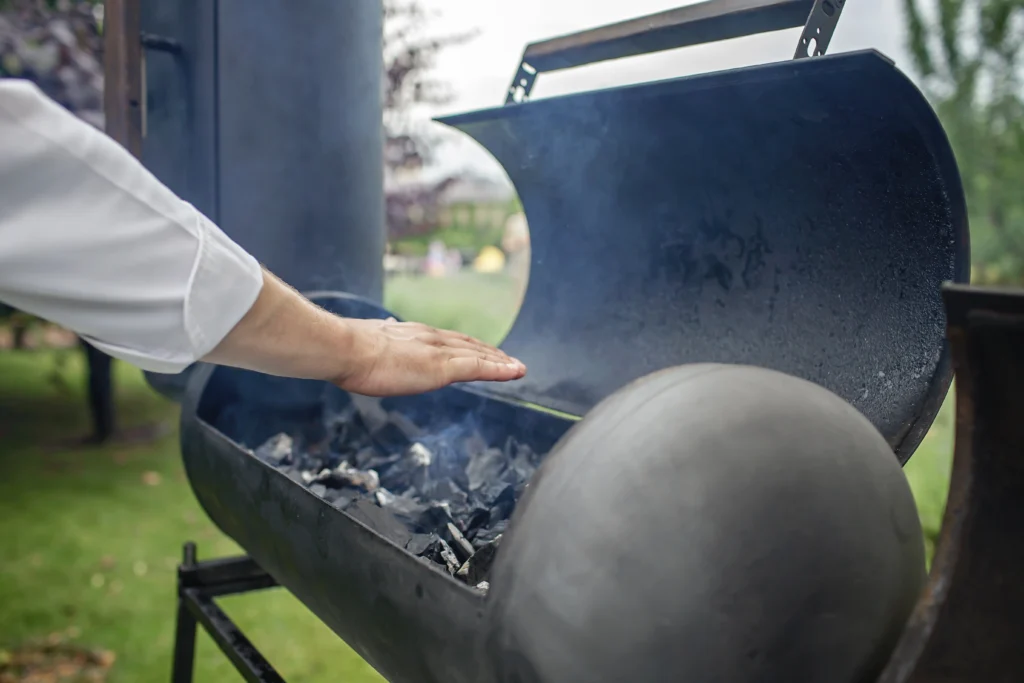
9. Not Understanding the “Low and Slow” Principle
Pellet smokers are designed for low and slow cooking, but many beginners rush the process by increasing the temperature too much. Smoking at high heat can lead to burnt outsides and undercooked insides.
What to do instead:
- Stick to the low and slow method (generally between 225°F and 250°F) for meats like brisket, ribs, or pulled pork.
- If you need to crisp the skin (for example, on chicken), finish the cook with a high-heat sear at the end to get that golden, crispy texture without sacrificing the flavor.
10. Not Adjusting for Ambient Weather Conditions
Weather plays a big role in how your pellet smoker performs. Cold or windy conditions can affect the smoker’s temperature and fuel efficiency, leading to longer cooking times and inconsistent results.
What to do instead:
- On cold days, try to keep the smoker sheltered or place it in an area that minimizes wind exposure.
- Use smoker blankets or insulation jackets during colder months to help maintain heat.
- In windy conditions, consider using a windshield or placing the smoker in a more protected area.
11. Over-seasoning or Under-seasoning Your Food
It’s easy to get carried away with seasoning, especially with the rich flavors of smoked food. However, over-seasoning can mask the natural smoky flavor, while under-seasoning leaves your food bland.
What to do instead:
- Apply a light coating of salt and seasoning at the beginning of the cook, but be careful not to overwhelm the natural flavors.
- Taste test as you go along—some dishes benefit from additional seasoning added after smoking, like with sauces or rubs.
- Don’t forget to balance your seasoning with the smoke flavor—the idea is for the smoke to complement, not overpower, the seasonings.
12. Smoking Fatty Cuts on High Heat
Fatty cuts of meat like pork shoulder, brisket, and ribs require time to break down their connective tissues and fats. If cooked on high heat, the fat will burn off quickly, and the meat will be dry and tough.
What to do instead:
- Smoke fatty cuts low and slow to allow the fat to render properly, resulting in tender, juicy meat.
- After the initial low-and-slow cook, you can finish by raising the temperature to develop a crispy outer crust.
Final Thoughts
Avoiding these common pellet smoker mistakes will ensure that your smoking experience is smoother and your results are more delicious. Take the time to learn your smoker’s quirks, experiment with different techniques, and enjoy the process of smoking food to perfection.
thank you for reading also:The Best Buffalo Chicken Recipe – Spicy, Crispy & Irresistible! – labelrecipes.com
And:25 Easy Pellet Grill Recipes for Beginners – Or Whatever You Do
